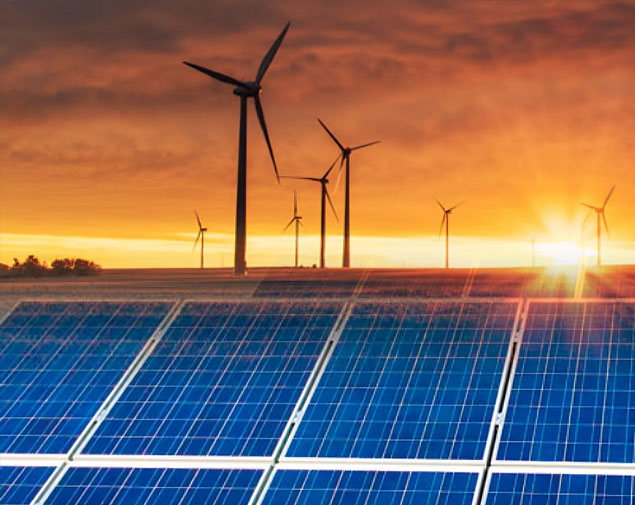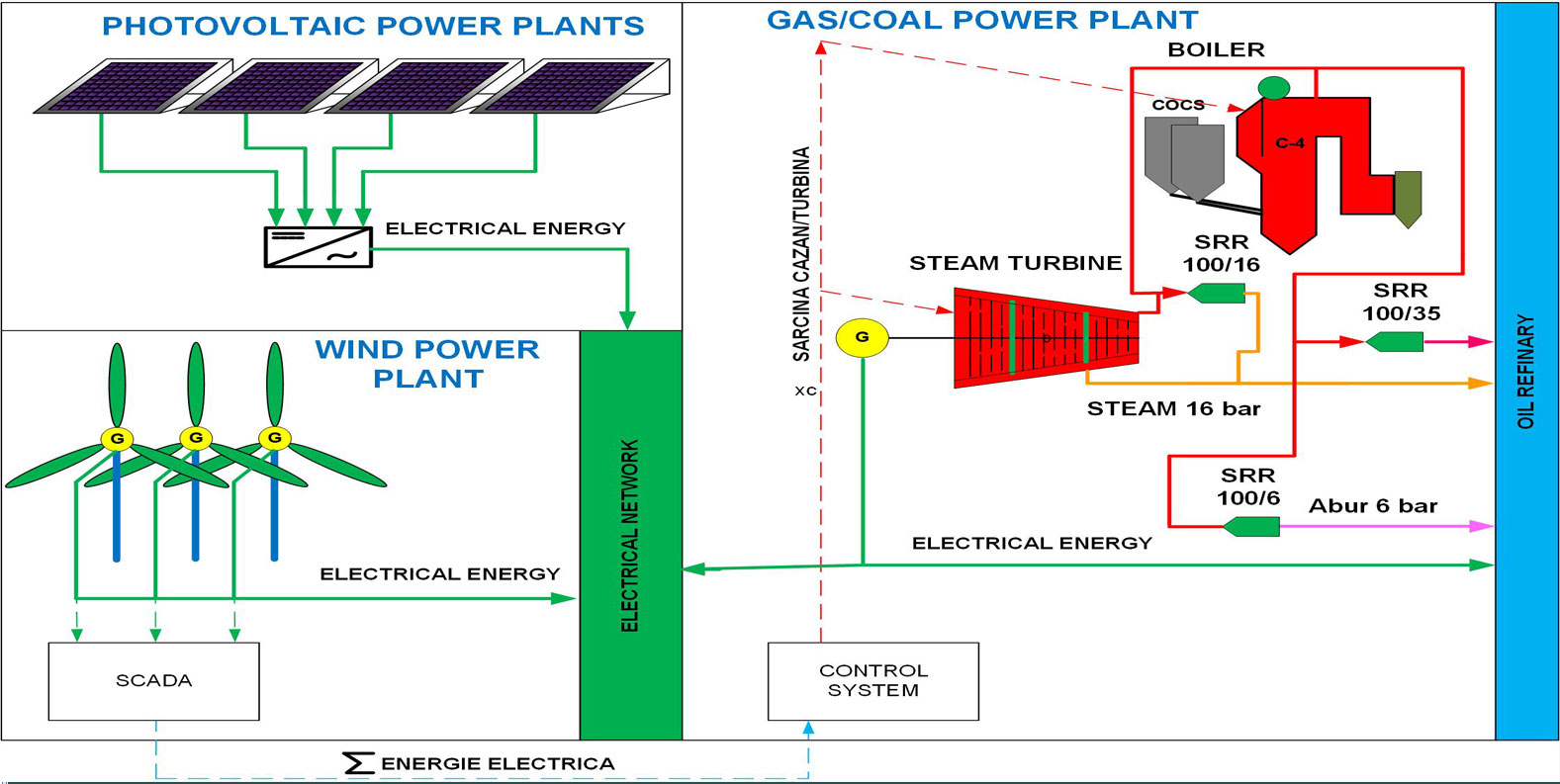Virtual Power Plant
Virtual Power Plant Combines Renewable Energy with Classic Power Sources for Uninterrupted Supply

Project Goal:
Integration of 4 photovoltaic power plants, 1 wind power plant, and 1 conventional gas/coal power plant with boilers and steam turbines into a single virtual power plant.
All control algorithms must be implemented in the gas/coal power plant control system. The overall output power of the virtual power plant should be balanced by the steam turbine.
Project Tasks:
1. Connecting 3 remote control systems of photovoltaic power plants with a capacity of 1 MW each to the gas/coal power plant control system.
2. Connecting the remote control system of wind power plants with a total capacity of 80 MW to the gas/coal power plant control system.
3. Connecting the local control system of photovoltaic power plants with a total capacity of 9 MW to the gas/coal power plant control system.
4. Implementing control algorithms in the gas/coal power plant control system to balance the overall output power of the virtual power plant via the steam turbine according to a predetermined schedule.
Integration of Renewable and Conventional Energy Sources into a Virtual Power Plant
The transition towards sustainable energy sources is an imperative step in combating climate change. One innovative approach to achieving this is the integration of various renewable energy sources with conventional power plants into a single virtual power plant (VPP). This project goal of combining photovoltaic (PV) power plants, a wind power plant, and a conventional gas/coal power plant into a cohesive VPP, with the steam turbine in the gas/coal plant playing a crucial role in balancing the overall output.
Integration of Photovoltaic Power Plants
Photovoltaic power plants harness solar energy and convert it into electricity. In this project, the integration involves connecting three remote control systems of PV power plants, each with a capacity of 1 MW, to the control system of the gas/coal power plant. Additionally, a local control system for PV power plants with a total capacity of 9 MW will also be connected. These connections are essential for centralizing the control and monitoring processes, thereby enabling efficient management of the power generated from these dispersed sources.
Incorporation of Wind Power
Wind power is another pivotal renewable energy source. This project involves connecting the remote control system of wind power plants, with a substantial total capacity of 80 MW, to the gas/coal power plant's control system. The high capacity of the wind power plants requires robust and precise control algorithms to ensure that the energy generated is effectively integrated into the VPP. The variability of wind power necessitates dynamic adjustment mechanisms within the control system to maintain a stable and balanced power output.
Role of Conventional Gas/Coal Power Plant
The conventional gas/coal power plant, equipped with boilers and steam turbines, acts as the backbone of this VPP. All control algorithms are to be implemented within this plant's control system. The steam turbine is particularly significant as it is responsible for balancing the overall output power of the VPP. By adjusting the steam turbine's output according to a predetermined schedule, the system can compensate for the fluctuations in power generated by the renewable sources, thereby ensuring a consistent supply of electricity.
Conclusion
The integration of photovoltaic and wind power plants with a conventional gas/coal power plant into a single virtual power plant represents a significant stride towards sustainable energy management. By centralizing control within the gas/coal power plant and leveraging its steam turbine for balance, this project aims to create a stable and efficient energy system. This approach not only maximizes the utilization of renewable energy sources but also ensures a reliable supply of electricity, highlighting the potential of hybrid energy systems in the future of power generation.

